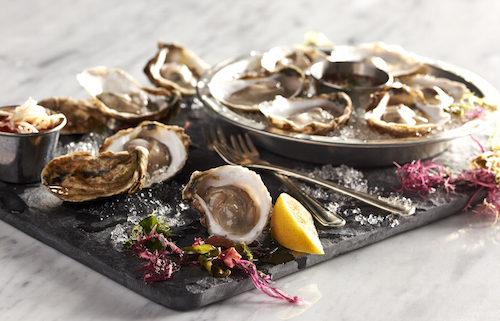In the current issue of My Table, you’ll find articles about the current threat to Gulf oysters and local fishermen, outside-of-the-box oyster preparations (move over, Rockefeller) and cookbook author George Graham’s recipe for a New Orleans-style Gulf Coast oyster loaf.
However, because of the shortened oyster season this winter, it can be hard to find oysters harvested from nearby Texas and Louisiana reefs. Many parts of the Gulf Coast were closed early in order to protect future oyster seasons from being too small to be sustained. This reduction in oyster populations is a result of years of floods and droughts that have taken their toll on our local oyster reefs by affecting the salinity of the bays. Oysters need just the right mix of fresh and salt water to be happy, grow large and reproduce. Consequently, price and demand have gone up, too, on oysters from New England and Canada.
In fact, it seems that over-fishing oysters and oyster theft have become so problematic that French tech company Flex-Sense has recently developed a “spy oyster” that will transmit notifications to the farmer of the oyster bed in which it is hidden when there is movement — as in illegal oyster fishing of that bed.

The Flex-Sense spy oyster. AFP photo
We were surprised to learn that the Oceanaire Seafood Room raises and farms their own specialty oysters in order to have a regular controlled harvest and size/quality standard. After all, Landry’s Signature Group, the parent company of the Oceanaire Seafood Room, sells a massive amount of seafood.
We were curious about this “private reserve” of oysters — they call them the Oceanaire Salts — and we learned that Oceanaire Salts are grown by a small specialty grower in the nutrient-rich waters near Cotuit, Massachusetts, on the southern tip of Cape Cod. Like other oysters from New England, they’re small but high in omega-3 fatty acids, zinc, iron, calcium and magnesium. Oceanaire Salts are specially developed triploid oysters, which means they are sterile hybrids bred to be plump and available year-round without any change in texture or taste. (Wild Gulf oysters, on the other hand, are spawny and lose mass in the summer and fall when they breed.)
According to representatives of the Oceanaire Seafood Room, “3,000 Oceanaire Salt oysters are iced and shipped directly from Boston to The Oceanaire Seafood Room each week to guarantee freshness” and are available raw and shucked for $4 each.
It looks like Tilman Fertitta and his Landry’s restaurant empire won’t be running out of oysters any time soon.









Follow Us